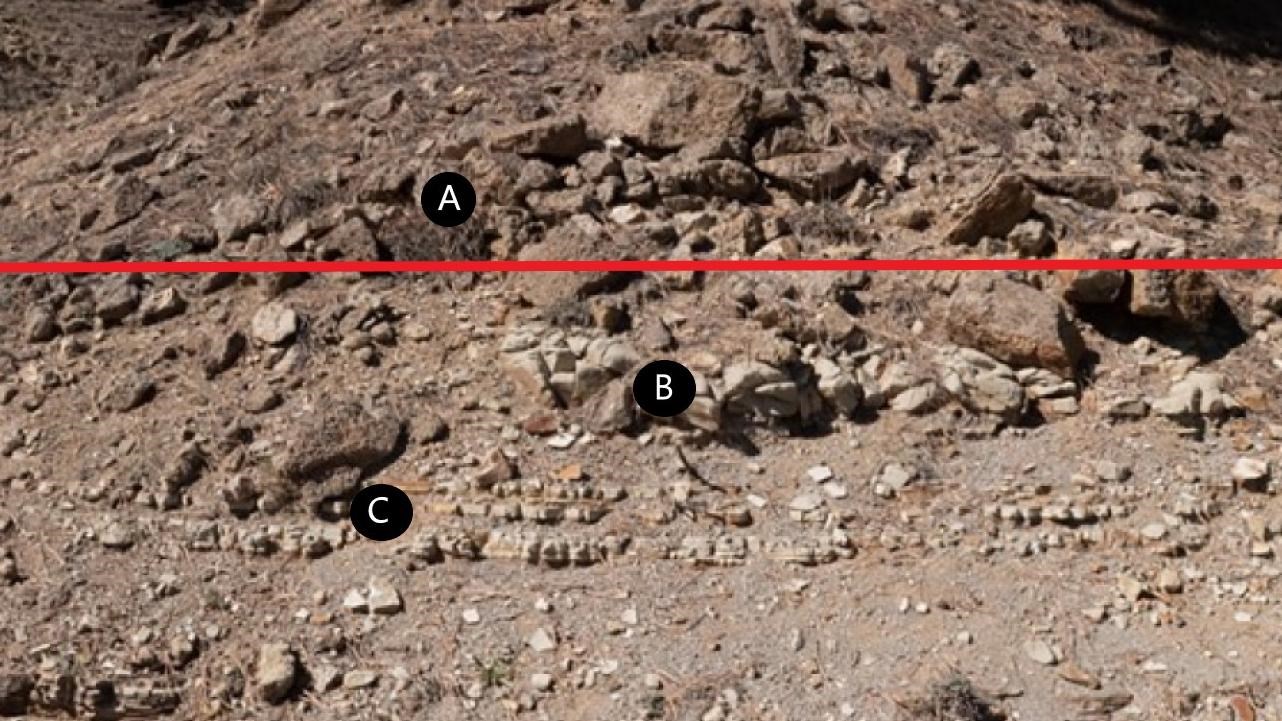Last updated: September 2, 2022
Place
Virtual Hidden Treasures

NPS
Geoheritage Highlight!
The majority of Florissant's world-famous fossils are plants and insects preserved in these delicate shales. Some pieces of shale are as thin as a sheet of paper, which makes them very fragile records of the past. A significant aspect of Florissant's Geoheritage is that there are 1,800 described fossil species, making Florissant one of the richest fossil sites in the world. The fossil record reveals that the climate and forest were much different in the warmer world here during the Eocene 34 million years ago.
The hillside pictured here contains thousands of tiny, fragile fossils of insects and leaves. The fossils are hidden between layers of rock called shale. The shale was formed at the bottom of an ancient lake that once existed in the Florissant valley.
Plants and animals that died in or near the ancient lake settled to the bottom where they were buried in layers of clay, ash and diatoms. Eventually, the layers hardened into rock, and the plants and animals became fossilized. As outcrops of shale weather, they separate into paper-thin sheets exposing fossils on their surfaces. A glimpse of the diverse Eocene ecology is revealed within these delicate "pages".
Contact!
The outcrop shown above shows a very important geologic contact within the Florissant Formation, shown by the red line. This contact formed when a debris flow settled in the lake to from the caprock conglomerate unit. The debris flow radically disrupted the lake environment and resulted in a distinct contact on the lake bottom with the middle shale unit. The thick, durable conglomerate protects the easily eroded shale.
A) The caprock conglomerate unit
B) Tuff formed from volcanic ash in the middle shale unit
C) Laminated shale beds in the middle shale unit
Shale Fossils
Some of the most spectacular fossils found in the Florissant valley are revealed only under the lens of a microscope. The distinctly shaped Xylonagra pollen grains reveal the presence of plants that were not preserved in the fossil leaf record.
